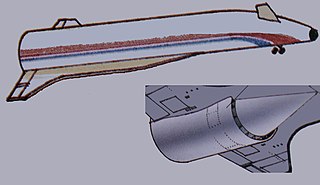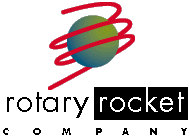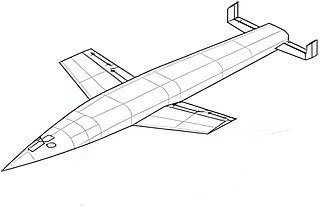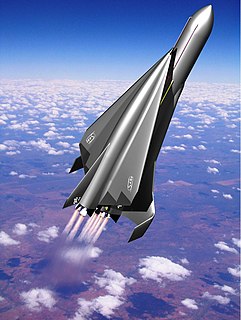 W
WA spaceplane is a vehicle that can fly/glide like an aircraft in Earth's atmosphere and maneuver like a spacecraft in outer space. To do so, spaceplanes must incorporate features of both aircraft and spacecraft, occupying an intermediate space between the two. Orbital spaceplanes are more like spacecraft, while sub-orbital spaceplanes are more like fixed-wing aircraft. All spaceplanes to date have been rocket-powered but then landed as unpowered gliders.
 W
WThe US Air Force's aerospaceplane project encompassed a variety of projects from 1958 until 1963 to study a fully reusable spaceplane. A variety of designs were studied during the lifetime of the project, including most of the early efforts on liquid air cycle engines (LACE) and even a nuclear-powered ramjet.
 W
WThe Airbus Defence and Space Spaceplane, also called EADS Astrium TBN according to some sources, is a suborbital spaceplane concept for carrying space tourists, proposed by EADS Astrium, the space subsidiary of the European consortium EADS. A full-size mockup was officially unveiled in Paris, France, on June 13, 2007, and is now on display in the Concorde hall of the Musée de l'Air et de l'Espace. The project is the first space tourism entry by a major aerospace contractor.
 W
WASSET, or Aerothermodynamic Elastic Structural Systems Environmental Tests was an experimental US space project involving the testing of an uncrewed sub-scale reentry vehicle.
 W
WBlackstar is the reported codename of a secret United States orbital spaceplane system. The possible existence of the Blackstar program was reported in March 2006 by Aviation Week & Space Technology magazine; the magazine reported that the program had been underway since at least the early 1990s, and that the impetus for Blackstar was to allow the United States government to retain orbital reconnaissance capabilities jeopardized following the 1986 Challenger disaster. The article also said that the United States Air Force's Space Command was unaware of Blackstar, suggesting it was operated by an intelligence agency such as the National Reconnaissance Office.
 W
WThe Boeing X-20 Dyna-Soar was a United States Air Force (USAF) program to develop a spaceplane that could be used for a variety of military missions, including aerial reconnaissance, bombing, space rescue, satellite maintenance, and as a space interceptor to sabotage enemy satellites. The program ran from October 24, 1957 to December 10, 1963, cost US$660 million, and was cancelled just after spacecraft construction had begun.
 W
WThe Boeing X-40A Space Maneuver Vehicle was a test platform for the X-37 Future-X Reusable Launch Vehicle.
 W
WBoost-glide trajectories are a class of spacecraft guidance and reentry trajectories that extend the range of suborbital spaceplanes and reentry vehicles by employing aerodynamic lift in the high upper atmosphere. In most examples, boost-glide roughly doubles the range over the purely ballistic trajectory. In others, a series of skips allows range to be further extended, and leads to the alternate terms skip-glide and skip reentry.
 W
WHOTOL, for Horizontal Take-Off and Landing, was a 1980s British design for a single-stage-to-orbit (SSTO) spaceplane that was to be powered by an airbreathing jet engine. Development was being conducted by a consortium led by Rolls-Royce and British Aerospace (BAe).
 W
WThe Buran programme, also known as the "VKK Space Orbiter programme", was a Soviet and later Russian reusable spacecraft project that began in 1974 at the Central Aerohydrodynamic Institute in Moscow and was formally suspended in 1993. In addition to being the designation for the whole Soviet/Russian reusable spacecraft project, Buran was also the name given to Orbiter K1, which completed one uncrewed spaceflight in 1988 and was the only Soviet reusable spacecraft to be launched into space. The Buran-class orbiters used the expendable Energia rocket as a launch vehicle. They are generally treated as a Soviet equivalent of the United States' Space Shuttle, but in the Buran project, only the aeroplane-shaped orbiter itself was theoretically reusable.
 W
WThe Dream Chaser is an American reusable lifting-body spaceplane being developed by Sierra Nevada Corporation (SNC) Space Systems. Originally intended as a crewed vehicle, the Dream Chaser Space System, to be produced after the cargo variant, Dream Chaser Cargo System, is operational. The crewed variant is capable of carrying up to seven people and cargo to and from low Earth orbit.
 W
WThe Goodyear Meteor Junior was a 1954 concept for a fully reusable spacecraft and launch system designed by Darrell C. Romick and two of his colleagues employed by Goodyear Aerospace, a subsidiary of the American Goodyear Tire and Rubber Company. Darrell Romick originally estimated that the craft would cost about the same as an intercontinental B-52 bomber.
 W
WHermes was a proposed spaceplane designed by the French Centre National d'Études Spatiales (CNES) in 1975, and later by the European Space Agency (ESA). It was superficially similar to the American Boeing X-20 Dyna-Soar and the larger Space Shuttle.
 W
WHOPE was a Japanese experimental spaceplane project designed by a partnership between NASDA and NAL, started in the 1980s. It was positioned for most of its lifetime as one of the main Japanese contributions to the International Space Station, the other being the Japanese Experiment Module. The project was eventually cancelled in 2003, by which point test flights of a sub-scale testbed had flown successfully.
 W
WThe Intermediate eXperimental Vehicle (IXV) is a European Space Agency (ESA) experimental suborbital re-entry vehicle. It was developed to serve as a prototype spaceplane to validate the ESA's work in the field of reusable launchers.
 W
WKliper was an early-2000s proposed partially-reusable crewed spacecraft concept by RSC Energia. Due to lack of funding from the ESA and RSA, the project was indefinitely postponed by 2006.
 W
WLockheed L-301 was an experimental air-breathing hypersonic aircraft project. It was developed by the NASA and United States Air Force (USAF) organization National Hypersonic Flight Research Facility, with Skunk Works as the prime contractor. In January 1977, the program was "tentatively scheduled to operate two vehicles for eight years and to conduct 100 flights per vehicle." NASA discontinued work on L-301 and NHRF in September 1977 due to budget constraints and lack of need.
 W
WThe Lockheed Martin X-33 was an uncrewed, sub-scale technology demonstrator suborbital spaceplane developed in the 1990s under the U.S. government–funded Space Launch Initiative program. The X-33 was a technology demonstrator for the VentureStar orbital spaceplane, which was planned to be a next-generation, commercially operated reusable launch vehicle. The X-33 would flight-test a range of technologies that NASA believed it needed for single-stage-to-orbit reusable launch vehicles, such as metallic thermal protection systems, composite cryogenic fuel tanks for liquid hydrogen, the aerospike engine, autonomous (uncrewed) flight control, rapid flight turn-around times through streamlined operations, and its lifting body aerodynamics.
 W
WThe XCOR Lynx was a proposed suborbital horizontal-takeoff, horizontal-landing (HTHL), rocket-powered spaceplane that was under development by the California-based company XCOR Aerospace to compete in the emerging suborbital spaceflight market. The Lynx was intended to carry one pilot, a ticketed passenger, and/or a payload above 100 km altitude. The concept was under development since 2003, when a two-person suborbital spaceplane was announced under the name Xerus.
 W
WThe Martin X-23A PRIME (SV-5D) was a small lifting-body re-entry vehicle tested by the United States Air Force in the mid-1960s. Unlike ASSET, primarily used for structural and heating research, the X-23A PRIME was developed to study the effects of maneuvering during re-entry of Earth's atmosphere, including cross-range maneuvers up to 617 nmi from the ballistic track.
 W
WThe Mikoyan-Gurevich MiG-105, part of the Spiral program, was a crewed test vehicle to explore low-speed handling and landing. It was a visible result of a Soviet project to create an orbital spaceplane. The MiG 105 was nicknamed "Lapot" Russian: лапоть, or bast shoe, for the shape of its nose.
 W
WThe X-38 was an experimental re-entry vehicle designed by NASA to research a possible emergency crew return vehicle (CRV) for the International Space Station (ISS). The 1995–2002 program also developed concepts for a crew return vehicle design that could be modified for other uses, such as a possible joint U.S. and international human spacecraft that could be launched on the French Ariane 5 booster.
 W
WThe DC-3 was one of several early design proposals for the NASA Space Shuttle designed by Maxime Faget at the Manned Spacecraft Center (MSC) in Houston. It was nominally developed by North American Aviation (NAA), although it was a purely NASA-internal design. Unlike the design that eventually emerged, the DC-3 was a fully reusable launch vehicle two-stage-to-orbit spaceplane design with a small payload capacity of about 12,000 lbs and limited maneuverability. Its inherent strengths were good low-speed handling during landing, and a low-risk development that was relatively immune to changes in weight and balance.
 W
WThe Orbital Sciences X-34 was intended to be a low-cost testbed for demonstrating "key technologies" that could be integrated into the Reusable Launch Vehicle program. It was intended to be an autonomous pilotless craft powered by a "Fastrac" liquid-propellant rocket engine, capable of reaching Mach 8 and performing 25 test flights per year.
 W
WThe Orbital Space Plane (OSP) program was a NASA spaceplane concept in the early 2000s designed to support the International Space Station requirements for crew rescue, crew transport and contingency cargo such as supplies, food and other needed equipment.
 W
WPrometheus was a proposed crewed vertical-takeoff, horizontal-landing (VTHL) lifting body spaceplane concept put forward by Orbital Sciences Corporation in late 2010 as part of the second phase of NASA's Commercial Crew Development (CCDev) program.
 W
WThe Rocketplane XP was a suborbital spaceplane design that was under development c. 2005 by Rocketplane Kistler. The vehicle was to be powered by two jet engines and a rocket engine, intended to enable it to reach suborbital space. The XP would have operated from existing spaceports in a manner consistent with established commercial aviation practices. Commercial flights were projected to begin in 2009. Rocketplane Global declared bankruptcy in mid-June 2010. Their assets were auctioned off in 2011.
 W
WThe Rockwell X-30 was an advanced technology demonstrator project for the National Aero-Space Plane (NASP), part of a United States project to create a single-stage-to-orbit (SSTO) spacecraft and passenger spaceliner. Started in 1986, it was cancelled in the early 1990s before a prototype was completed, although much development work in advanced materials and aerospace design was completed. While a goal of a future NASP was a passenger liner capable of two-hour flights from Washington to Tokyo, the X-30 was planned for a crew of two and oriented towards testing.
 W
WRotary Rocket Company was a rocketry company that developed the Roton concept in the late 1990s as a fully reusable single-stage-to-orbit (SSTO) crewed spacecraft. The design was initially conceived by Bevin McKinney, who shared it with Gary Hudson. In 1996, Rotary Rocket Company was formed to commercialize the concept. The Roton was intended to reduce costs of launching payloads into low earth orbit by a factor of ten.
 W
WSaenger or Sänger was a West German concept design for a two-stage-to-orbit spaceplane. It is named after Eugen Sänger, who had been a key figure in the development of the concept for aerospace company Junkers.
 W
WSilbervogel was a design for a liquid-propellant rocket-powered sub-orbital bomber produced by Eugen Sänger and Irene Bredt in the late 1930s for The Third Reich/Nazi Germany. It is also known as the RaBo. It was one of a number of designs considered for the Amerika Bomber mission, which started in the spring of 1942, being focused solely on trans-Atlantic-range piston-engined strategic bombers, like the Messerschmitt Me 264 and Junkers Ju 390, the only two airframe types actually built and flown for the competition. When Walter Dornberger attempted to create interest in military spaceplanes in the United States after World War II, he chose the more diplomatic term antipodal bomber.
 W
WSkylon is a series of designs for a single-stage-to-orbit spaceplane by the British company Reaction Engines Limited (REL), using SABRE, a combined-cycle, air-breathing rocket propulsion system. The vehicle design is for a hydrogen-fuelled aircraft that would take off from a purpose-built runway, and accelerate to Mach 5.4 at 26 kilometres (85,000 ft) altitude using the atmosphere's oxygen before switching the engines to use the internal liquid oxygen (LOX) supply to take it into orbit. It could carry 17 tonnes (37,000 lb) of cargo to an equatorial low Earth orbit (LEO); up to 11 tonnes (24,000 lb) to the International Space Station, almost 45% more than the capacity of the European Space Agency's Automated Transfer Vehicle; or 7.3 tonnes (16,000 lb) to Geosynchronous Transfer Orbit (GTO), over 24% more than SpaceX Falcon 9 launch vehicle in reusable mode. The relatively light vehicle would then re-enter the atmosphere and land on a runway, being protected from the conditions of re-entry by a ceramic composite skin. When on the ground, it would undergo inspection and necessary maintenance, with a turnaround time of approximately two days, and be able to complete at least 200 orbital flights per vehicle.
 W
WThe Space RIDER is a planned uncrewed orbital spaceplane aiming to provide the European Space Agency (ESA) with affordable and routine access to space. Contracts for construction of the vehicle and ground infrastructure were signed in December 2020. Its expected maiden flight is in the third quarter of 2023.
 W
WThe Space Shuttle orbiter is the spaceplane component of the Space Shuttle, a partially reusable orbital spacecraft system that was part of the discontinued Space Shuttle program. Operated from 1977 to 2011 by NASA, the U.S. space agency, this vehicle could carry astronauts and payloads into low Earth orbit, perform in-space operations, then re-enter the atmosphere and land as a glider, returning its crew and any on-board payload to the Earth.
 W
WSpaceLiner is a concept for a suborbital, hypersonic, winged passenger supersonic transport, conceived at the German Aerospace Center in 2005. In its second role the SpaceLiner is intended as a reusable launch vehicle (RLV) capable of delivering heavy payloads into orbit.
 W
WSpaceShipOne is an experimental air-launched rocket-powered aircraft with sub-orbital spaceflight capability at speeds of up to 900 m/s (3,000 ft/s), using a hybrid rocket motor. The design features a unique "feathering" atmospheric reentry system where the rear half of the wing and the twin tail booms folds 70 degrees upward along a hinge running the length of the wing; increasing drag while remaining stable. SpaceShipOne completed the first crewed private spaceflight in 2004. That same year, it won the US$10 million Ansari X Prize and was immediately retired from active service. Its mother ship was named "White Knight". Both craft were developed and flown by Mojave Aerospace Ventures, which was a joint venture between Paul Allen and Scaled Composites, Burt Rutan's aviation company. Allen provided the funding of approximately US$25 million.
 W
WThe Scaled Composites Model 339 SpaceShipTwo (SS2) is an air-launched suborbital spaceplane type designed for space tourism. It is manufactured by The Spaceship Company, a California-based company owned by Virgin Galactic.
 W
WVentureStar was a single-stage-to-orbit reusable launch system proposed by Lockheed Martin and funded by the U.S. government. The goal was to replace the Space Shuttle by developing a re-usable spaceplane that could launch satellites into orbit at a fraction of the cost. While the requirement was for an uncrewed launcher, it was expected to carry passengers as cargo. The VentureStar would have had a wingspan of 68 feet (20.7 m), a length of 127 feet (38.7 m), and would have weighed roughly 1000 t.
 W
WThe North American X-15 was a hypersonic rocket-powered aircraft operated by the United States Air Force and the National Aeronautics and Space Administration as part of the X-plane series of experimental aircraft. The X-15 set speed and altitude records in the 1960s, reaching the edge of outer space and returning with valuable data used in aircraft and spacecraft design. The X-15's highest speed, 4,520 miles per hour, was achieved in October 1967, when William J. Knight flew at Mach 6.70 at an altitude of 102,100 feet (31,120 m), or 19.34 miles. This set the official world record for the highest speed ever recorded by a crewed, powered aircraft, which remains unbroken.
 W
WThe Boeing X-37, also known as the Orbital Test Vehicle (OTV), is a reusable robotic spacecraft. It is boosted into space by a launch vehicle, then re-enters Earth's atmosphere and lands as a spaceplane. The X-37 is operated by the United States Space Force, and was previously operated by Air Force Space Command until 2019 for orbital spaceflight missions intended to demonstrate reusable space technologies. It is a 120-percent-scaled derivative of the earlier Boeing X-40. The X-37 began as a NASA project in 1999, before being transferred to the United States Department of Defense in 2004.